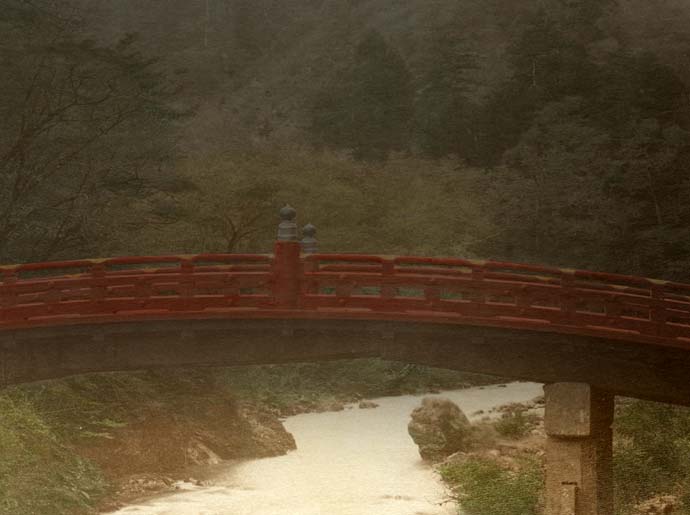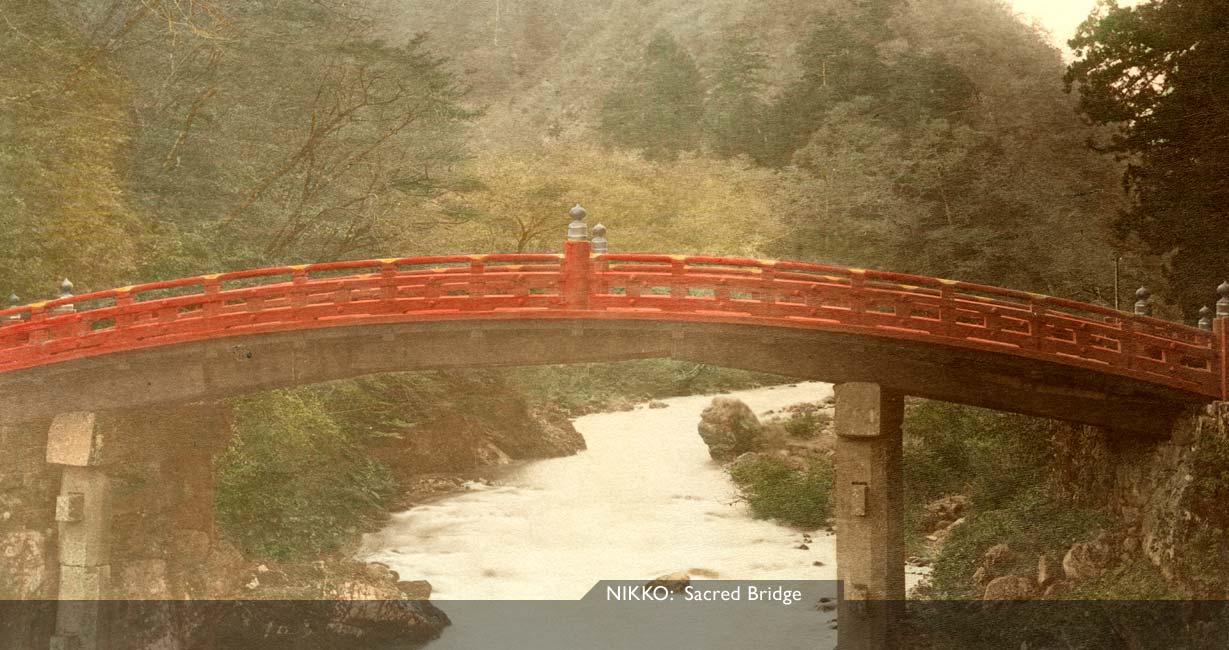Nikko
“Two bridges cross the Daiyagawa, and lead to the groves and temples that make Nikko’s fame. One bridge is an every-day affair of plain unpainted timbers, across which jinrikishas rumble noisily, and figures pass and re-pass. The other is the sacred bridge, over which only the Emperor may pass, in lieu of the Shoguns of old, for whom it was reserved. It is built of wood, covered with red lacquer, with many brass plates and tips, and rests on foundation piles of Titanic stone columns, joined by cross-pieces of stone, carefully fitted and mortared in.”

“Two bridges, almost side by side, span the torrent, but only one is for public use. The other, painted a bright red, looks almost new as if finished yesterday, yet it was built in 1638, two and a half centuries ago.”
(
More)
Eliza Ruhamah Scidmore, Jinrikisha Days in Japan, (New York, 1891) p. 148
Albert Tracy, Rambles Through Japan Without a Guide, (London, 1892) p. 51
Nikko
“Following the village road we crossed the sparkling torrent of the Daiya-gawa by a temporary wooden bridge. A little higher up the stream stood the sacred bridge, its dark red coloring contrasting picturesquely with a background of green cryptomerias. In days gone by the Bridge was closed to all but the Shoguns and pilgrims, and to the latter it was and still is only open twice in the year. Today we were told it was ‘close for repairs,’ though I rather think that may be a permanent ‘blind’ for foreigners.
“…This portal is a fair example of Japanese animal wood carving and painting. Lions, tigers, tapirs, elephants' heads, &c., are all represented, with accurate carvings of the tree-peony, tastefully thrown in.”

“Of all Japan's sacred places, Nikko, or Sun's Brightness, is dearest to the Japanese heart. Art, architecture, and landscape gardening add to nature's opulence, history and legend people it with ancient splendors, and all the land is full of memories. ‘He who has not seen Nikko cannot say “Kekko!”’ (beautiful, splendid, superb) runs the Japanese saying.”
Arthur H. Crow, Highways and Byeways in Japan, (London, 1883) pp. 180–181
Eliza Ruhamah Scidmore, Jinrikisha Days in Japan, (New York, 1891) p. 147



